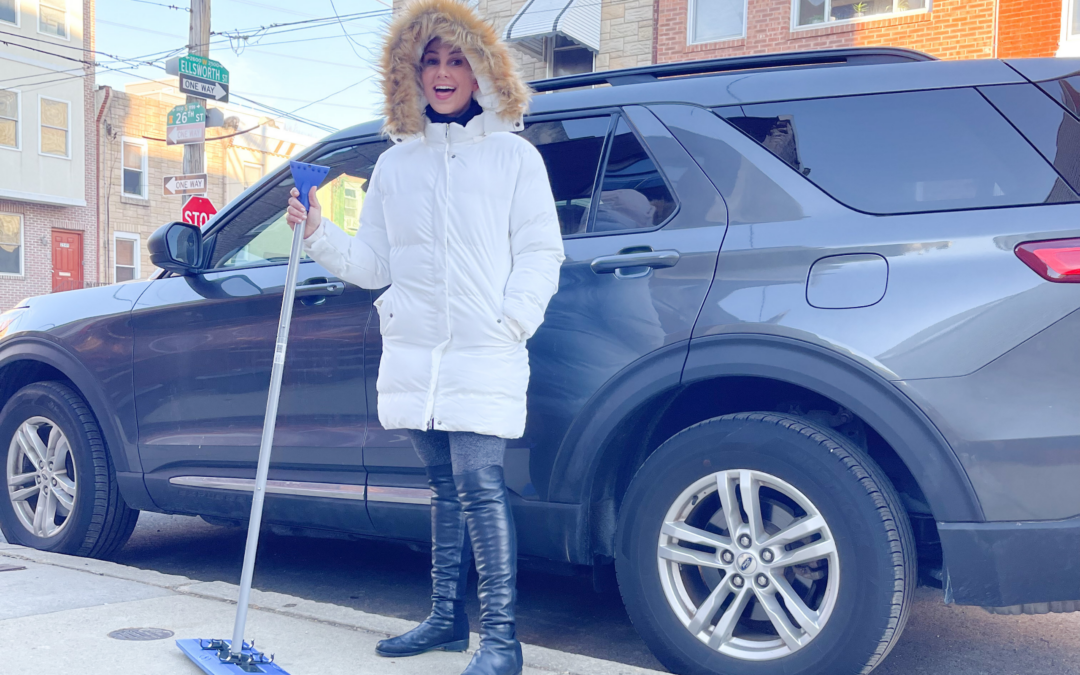Road trips can be a daunting adventure, even more so with kids—and even more so in winter! We all know that driving long distances in the winter has its fair share of challenges and threats. From dangerous road conditions to extreme weather, you need to be prepared for it all.
You have probably played out many scary scenarios in your head of what could happen in those wet and frigid conditions. You’ve imagined everything from sliding off the road to getting stuck with no help in sight. Adding your children to this hypothetical situation adds even more anxiety!
Well, have no fear! All you need is a little preparation and a little caution, and you can safely road trip in the winter with your children. Sooo with all that in mind, we’ve compiled a list of Winter road trip safety tips for your next winter road trip.
13 Winter Road Trip Safety Tips
1. Make Sure You Have Safe & Effective Car Seats
Really the most important thing when you’re going on a Winter road trip, or any road trip for that matter, are your car seats. The longer you’re in the car, the more chances there are for accidents. Proper use of your car seat is critical! A car seat is the single item that can help keep your child safe in a car crash. If you need help choosing a car seat, we recommend checking out our car seat buying kits or schedule a consultation to find the perfect (and safest) car seat for your family!
Freshen up on those car seat skills by taking a course with us. The Infant Course is designed to take you from confused to confident during your baby’s first year of car seat safety. The Convertible Car Seat Course will take you from confused to confident in the convertible car seat stage.
2. Know the Updated Weather Forecast
Before you hit the road, knowing the forecast is a must. Ensure that you look up the forecast before you leave to identify potential hazards like blizzards or freezing rain. Even if your trip is a few days or weeks out. Many weather apps provide projections that can make you aware of potential problems that may make you reconsider your trip or plan an alternate route.
3. Do a Quick Vehicle Check
Your vehicle should be in tip-top shape for your road trip. The last thing you want is to be blind-sided by an unknown problem. Here are a few things to check prior to leaving for a long drive:
- All Your Car Fluids
- Wiper Blades
- All Car Lights
- Tire Pressure (we love this digital one!)
- Car Battery
- Spare Tire & Changing Kit
4. Stock Your Vehicle with Winter Essentials
Your car should be stocked with winter essentials not only for long road trips, but for everyday winter driving! These items are best to keep for potential and inevitably winter challenges:
- Ice Scraper and Brush
- Jumper Cables
- Collapsible Road Shovel
- Tire Chains or Tow Strap
- Consider Snow Tires
5. Build a Winter Emergency Kit
Beyond the usual winter maintenance items, an emergency kit is a must-have! Not only will you want plenty of items for yourself, but you’ll want a fully-stocked kit that includes age-appropriate necessities for your children! Here’s our list that should cover everything:
Winter Emergency Kit Items For Your Car:
- Blankets
- Hats, Socks, and Mittens
- Flashlight with Extra Batteries
- First Aid Kit
- Bottled Water
- Hand Warmers
- Winter Boots
- Non-Perishable Food and Snacks
- Extra Winter Clothing
- Portable phone charger
- If you’re traveling with a small child make sure you also bring all of their essentials. Think bottles, diapers, wipes, the works!
See a full list of ideal tools & supply items to keep in your car HERE.
6. Use Our Winter Shopping Clothing Guide For The Car
Though it may be cold outside and a little chilly when you get into the car, children (and adults!) should never wear bulky winter clothes in their car seat. This can add too much space between the child and the straps, which could be critical in a crash. So while you of course want to bring jackets and coats, remove bulky clothes from children before strapping them in.
What your child wears in the seat matters. A small change, like a winter coat, can mean big consequences. Put your child’s winter coat to the test and learn how to keep them warm in the seat without compromising their safety.
All of the items in this Winter Guide, such as car seat safe jackets, are great for bringing on a road trip, or using during a cold winter road trip. Dress your child in long sleeves and long pants, but then use blankets placed over top of their tight harness straps and layer up with hats and gloves to keep them warm in their seat. For more information, check out our article on how to keep kids safe in their car seats during winter.
7. Inform Someone Before You Leave
When you leave your home and head out on your great white adventure, be sure to tell someone. Someone knowing when to expect you will give you an added layer of protection.
If you don’t arrive at your destination on time, your friend or family member can call for help and get aid to you and your family quickly. If you’ve been in an accident or if you’re stranded without cell service, this can be the difference between life and death.
Just be sure to stay in contact with this person throughout the trip (during stops or via a passenger). Just so they know if you’ve encountered a delay and can track your progress along the way.
8. Never Warm Your Car in the Garage
Carbon monoxide poisoning is a known winter threat, but some feel secure leaving their car running in the garage with the door partially or fully open.
Contrary to popular belief, carbon monoxide poisoning can still happen with open garage doors in any enclosed space. Never warm your car in the garage even in cold weather and instead back it into the driveway if you want to get the heat pumping before everyone piles in.
Additionally, if you become stuck in a snowstorm, make sure you keep your exhaust pipe clear as the snow and ice piles up to avoid another carbon monoxide poisoning threat.
9. Slow Down and Increase Your Distance
No matter what time-sensitive commitment you have to get to, remember that safety is the most important thing, so slow down! Slow and steady wins the race! And while you’re at it, increase the space between you and the cars in front of you. Shoot for a minimum of 4 car lengths. Add more if that makes you feel more safe. You’ll decrease the chances of rear-ending someone big time!
Avoid using cruise control on slippery roads – that includes snow, ice, heavy rain and hailstorms – as this increases the chances of sliding. More on cruise control here.
10. Get To Know Your Brakes
In line with the tip above, it’s also a good idea to familiarize yourself with your brakes. You may remember from Driver’s Ed way back that you were told to pump your breaks. This is still true for some vehicles, but if your vehicle is equipped with an antilock brake system, then they will do this automatically when the vehicle senses traction issues.
If you have an anti-lock system, press firmly on the brake pedal if you begin to slide. Remember, driving slowly can prevent skidding altogether!
11. Keep Your Gas Tank Full
You may be motivated to push a few more miles and avoid the hassle of getting all the kids safely back in their seats after they’re released from the vehicle to stretch or go potty, but it’s important to keep your gas levels always above half a tank.
This is wise for two reasons. One, if you get stuck in the snow or need to stop during extreme conditions, you don’t know how long you’ll need to stay put and wait for help. If the temperature drops significantly, you’ll want to keep your car running to keep your family warm. So you’ll need the extra gas to run the vehicle as long as possible.
Two, in certain winter weather conditions, condensation can build inside your gas tank in the space where there is no fuel. If temperatures are below freezing, this vapor can freeze and prevent your car from working. The more full your fuel tank is, the less room there is for this potentially hazardous vapor.
12. Stay Visible and Safe in an Emergency
In an emergency, AAA recommends that you ALWAYS stay with your vehicle in a winter event. Never exit the car to find help. They also advise that you tie brightly colored items to your antenna as a distress signal or keep the interior lights on at night.
13. Know When It Might Be a Good Idea to Cancel Plans
As much as you might be looking forward to the trip, nothing is worth jeopardizing the safety of your family. If driving conditions aren’t ideal, such as bad weather, or the whole thing makes you uneasy, reschedule the trip and keep all your preparation and safety tips in mind for next time! And if you’re looking for more information on car safety, check out our Amazon Live on all things Winter Safety in the car.
In this YouTube Video, I’ll walk through my recommended products to keep the outside, inside and riders of your vehicle safe.
So there you have it! Our safety tips to help you stay safe on your next Winter road trip. If you have questions on winter safety beyond the car, check out our Winter Safety FAQs post!
Affiliate links are included above. Safe in the Seat earns a small commission when you purchase through these links with no cost to you. We so appreciate your support.

